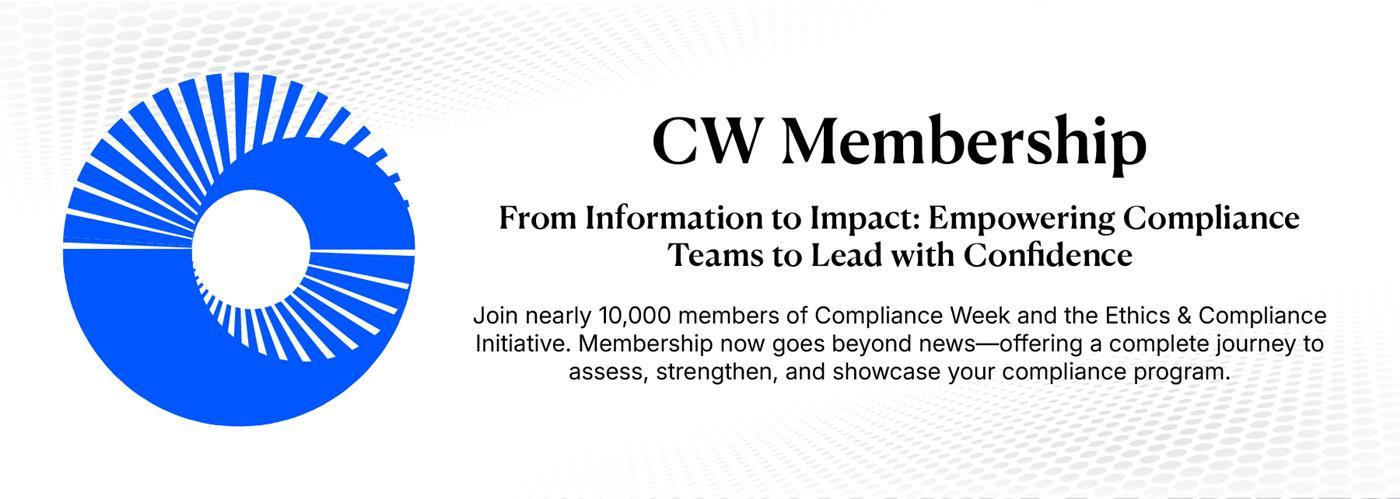- Home
-
News
- Back to parent navigation item
- News
- National Compliance Officer Day 2025
- Accounting & Auditing
- AI
- AML
- Anti-Bribery
- Best Practices
- Boards & Shareholders
- Cryptocurrency and Digital Assets
- Culture
- ESG/Social Responsibility
- Ethics & Culture
- Europe
- Financial Services
- Internal Controls
- Regulatory Enforcement
- Regulatory Policy
- Risk Management
- Sanctions
- Surveys & Benchmarking
- Supply Chain
- Third Party Risk
- Whistleblowers
- Opinion
- Benchmarking
- Certification
- Events
- Research
- Awards
-
CW Connect
- Back to parent navigation item
- CW Connect
- Sign In
- Apply
- Membership
Despite reputation, CFPB not toothless under new leadership
By  Jaclyn Jaeger2019-10-28T18:49:00
Jaclyn Jaeger2019-10-28T18:49:00
Mounting criticism for going too soft on the financial services industry under Trump has not stopped new CFPB Director Kathleen Kraninger from putting her own stamp on the agency. The latest enforcement actions offer valuable insights for compliance officers and corporate counsel.
THIS IS MEMBERS-ONLY CONTENT
You are not logged in and do not have access to members-only content.
If you are already a registered user or a member, SIGN IN now.
Related articles
-
 Article
ArticleCFPB under Biden will likely get new director, new direction
2020-11-09T14:17:00Z By Aaron Nicodemus
The Consumer Financial Protection Bureau is likely to revert to its more aggressive, Obama-era version of itself under a Biden administration.
-
Article
Supreme Court: CFPB single-director structure unconstitutional
2020-06-29T18:59:00Z By Jaclyn Jaeger
The U.S. Supreme Court ruled the CFPB’s single-director structure violates the separation of powers between the executive and legislative branches and is unconstitutional.
-
 Article
ArticleCFPB launches pilot advisory opinion program
2020-06-23T14:00:00Z By Aaron Nicodemus
The Consumer Financial Protection Bureau has launched a pilot advisory opinion program that allows companies seeking to comply with its regulations to submit questions on areas of uncertainty.
More from Regulatory Enforcement
-
 Article
ArticleTariff evasion enforcement: The new FCPA
2025-12-24T16:46:00Z By Jaclyn Jaeger
Companies that import goods into the United States will face heightened enforcement scrutiny for attempted acts of customs fraud, including tariff evasion, under the Trump administration. Thus, chief compliance officers and in-house counsel face a new kind of pressure to ensure they are mitigating risk in this area.
-
 Article
ArticleFormer COO of plastics importer faces up to five years for customs falsifications
2025-12-24T13:54:00Z By Adrianne Appel
The chief operating officer of a plastic resin importer has pleaded guilty to intentionally falsifying documents to avoid paying tariffs on goods from China, the Department of Justice (DOJ) announced.
-
 Article
ArticleCybercrime against banks and account holders takes hit from FBI
2025-12-23T21:50:00Z By Adrianne Appel
Federal investigators have announced progress in dismantling an online criminal operation that steals bank account information by mimicking legitimate bank websites.
- Terms and Conditions
- Privacy Policy
- Do Not Sell My Info
- © 2025 Compliance Week
Site powered by Webvision Cloud






